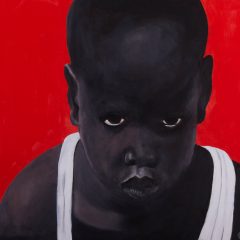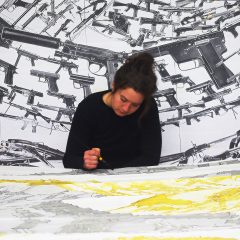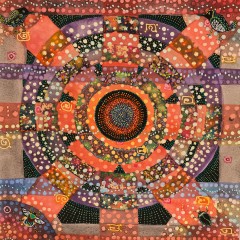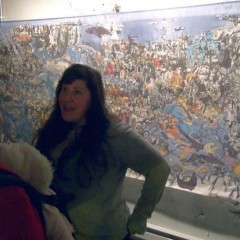Post by Becky Hunter
I still feel a bit like the new girl in town: keen to explore the city and its surroundings, discover interesting art and meet new people. It was lovely, therefore, to find myself in West Philly artist Nakima Ollin’s car last Saturday, driving to see the two-person show Earthly Delights in the Norristown Arts Building. Pagus Gallery’s large, bright space and winding corridors were filled with two artists’ works: Ollin’s intricate paintings and drawings and Emily Erb’s large-scale, dyed silk works.
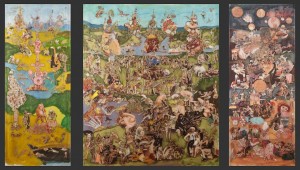
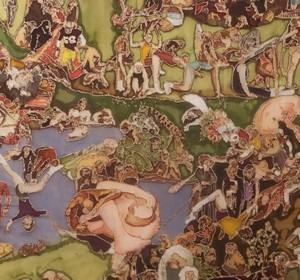
Tyler School of Art grad Emily Erb’s complex dye-on-silk piece The Garden of Earthly Delights (2011) inspires the exhibition’s title. Spanning more than six by fourteen feet, the triptych compositionally shadows its early Netherlandish namesake by master painter Hieronymus Bosch. But contemporary themes are at play. Erb replaces Bosch’s mythical creation and damnation scenes with a humorous reversal of evolution in which apes and humans exchange roles.
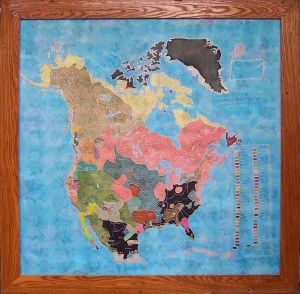
Erb’s silk painting Native Languages of North America (2011) combines elements of skilled craft, meticulous research, and scrawled, anthropological diagramming. A dyed map of North America is carved up with gilt fabric pen lines and a colored key according to the languages once (and sometimes still) spoken in each area: Eskimo Aleut, Uto-Aztecan, and Zuni are just a few of them. It’s a powerful work of mourning for lost cultural diversity and, like the rest of her map pieces on display, pushes emotion and critical thinking into productive friction.

Ollin’s small, tightly observed cityscapes and industrial still lifes strike color chords in a restrained palette of blues, peachy-pinks, and browns. Working primarily in hand-mixed egg tempera – a medium that demands fine attention to detail – Ollin’s surfaces are tactile mosaics of tiny, deeply felt marks. I-95 traces the effects of light on rusted, interwoven refinery pipes against a dramatic Philadelphia sky.
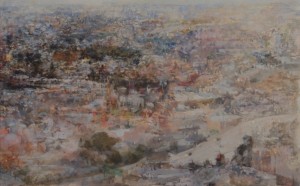
The looser oil on panel City 2 (2011) signals a new direction for Ollin. Oil paint’s flexibility allows her to extract and extend the abstract gestures that hover at the edges of her observational paintings. The effect is of luminous, liberated representation, recalling Brazilian, London-based painter Varda Caivano‘s equally modest works that merge figuration and abstraction. Caivano’s aim is to create “a bridge, a transitional space that evokes an inner world.” This deeper meaning in everyday objects and experiences is something that City 2 also reaches towards, and I look forward to further developments in this vein in Ollin’s works.
The show runs until December 2. It’s definitely worth the drive or regional rail trip out.
–Becky Hunter, who recently moved to Philadelphia from London, writes about art on her blog and at Art Papers, Sculpture and White Hot Magazine.


